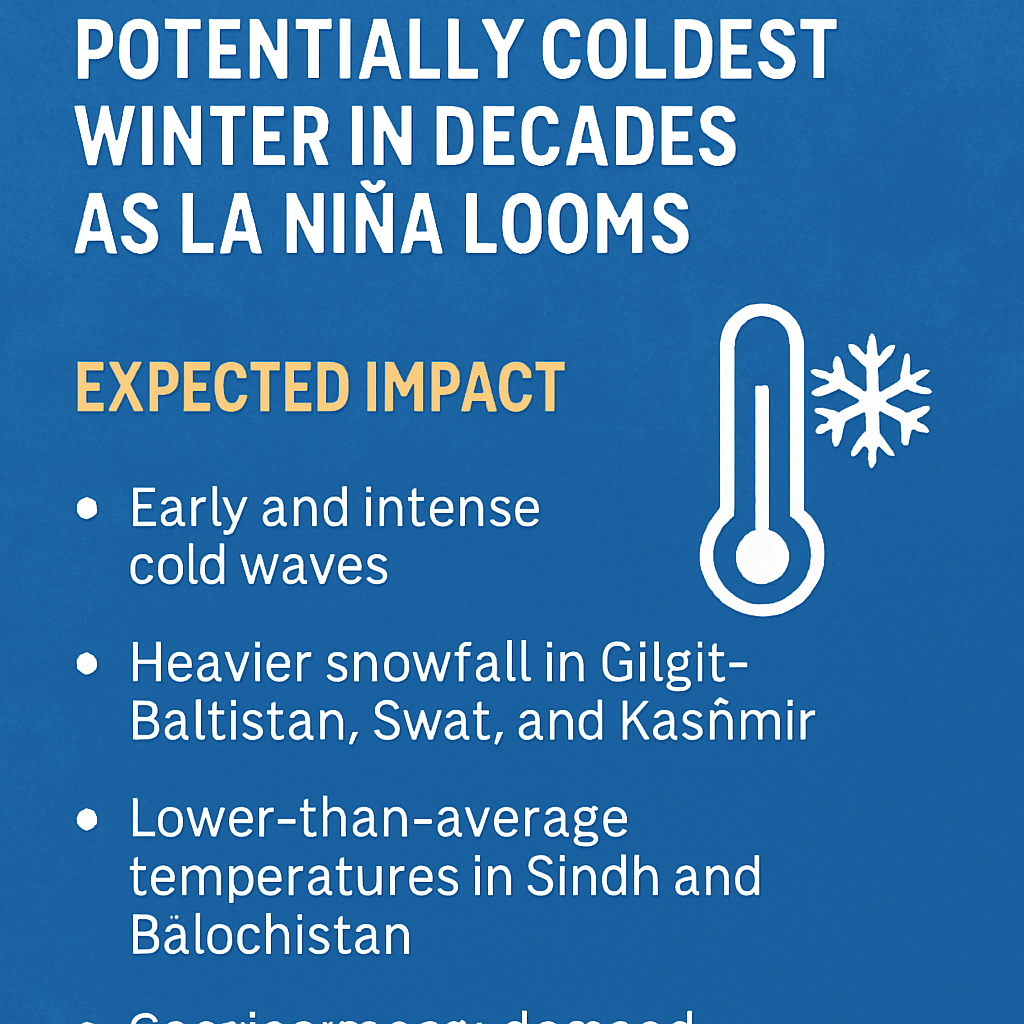Pakistan may be heading for an unusually harsh winter in 2025–26, with meteorologists warning that a developing La Niña pattern in the Pacific Ocean could bring prolonged cold waves and record-low temperatures across the country.
What is La Niña?
La Niña occurs when sea-surface temperatures in the central and eastern Pacific cool below normal, altering global weather systems. For South Asia, this typically means colder, wetter winters and shifts in monsoon dynamics.
Expected Impact on Pakistan
Climatologists say the upcoming season could bring:
- Early and intense cold waves, with extended frost spells across Punjab and Khyber Pakhtunkhwa.
- Heavier snowfall in Gilgit-Baltistan, Swat, and Kashmir, raising the risk of avalanches and road closures.
- Lower-than-average temperatures in Sindh and Balochistan, potentially straining agriculture, livestock, and heating fuel supplies.
- Greater energy demand, challenging national gas and electricity networks.
Even a moderate La Niña can intensify winter storms, disrupt transport, and increase health risks such as hypothermia and seasonal respiratory illnesses.
Preparedness Measures
Experts urge residents and authorities to:
- Stock up on winter essentials like warm clothing, heating fuel, and emergency supplies.
- Reinforce infrastructure, including water lines and power grids, to withstand extreme cold.
- Protect crops and livestock with timely irrigation and shelter arrangements.
The Pakistan Meteorological Department will release detailed forecasts in the coming weeks, but early signals point to stronger cooling trends than usual.
📌 Disclaimer: This article is for informational purposes only and the accompanying image is AI-generated. Follow VIRAL PK 24/7 for more updates.
SEO Keywords: Pakistan winter 2025 forecast, La Niña Pakistan weather, coldest winter decades, Pakistan snowfall 2025, Punjab cold wave, Gilgit Baltistan heavy snowfall, Pakistan climate alert, Sindh Balochistan winter forecast










